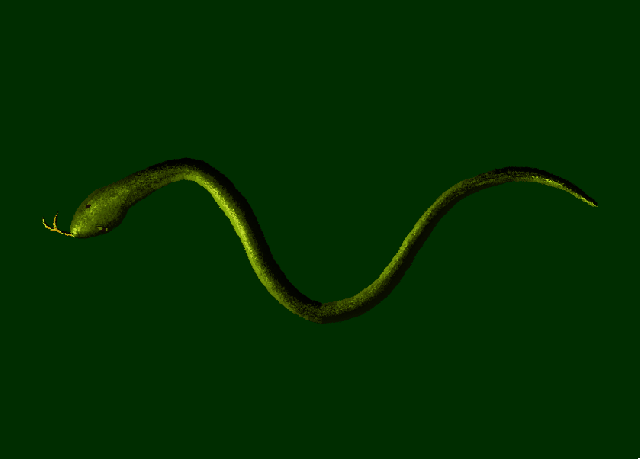
Slither with S

Rationale:
This lesson will help children identify /s/, the phoneme represented by S. b Students will learn to recognize /s/ in spoken words by learning a sound analogy (sliding) and the letter symbol S, practice finding /s/ in words, and apply phoneme awareness with /s/ in phonetic cue reading by distinguishing rhyming words from beginning letters.
Materials:
-
Primary paper
-
Pencil
-
Chart with "Sam’s slimy snail slithers slowly"
-
Drawing paper
-
Crayons
-
MY “S” Book (Jane Belk Moncure, 1984)
-
Word cards with SON, SIX, SAND, SOUND, SNAKE, and SLIDE
-
Assessment worksheet identifying pictures with /s/ (URL below).
Procedures:
1. Say: Our written language is a secret code. The tricky part is learning what letters stand for—the mouth moves we make as we say words. Today we're going to work on spotting the mouth move /s/. We spell /s/ with letter S. S looks like a slithering snake, and /s/ sounds like a snake slithering in the grass.
2. Let's pretend to slither like a snake, /s/, /s/, /s/. [Pantomime slithering] Notice where your tongue is? (Touching the back of your teeth). When we say /s/, we blow air between out of the gap that our tongue and our teeth make.
3. Let me show you how to find /s/ in the word snake. I'm going to stretch snake out in super slow motion and listen for my slithering. Sss-n-n-ake. Slower: Sss-n-n-n-aaa-ke There it was! I felt my tongue touch my teeth and blow air. Slither /s/ is in snake.
4. Let's try a tongue tickler [on chart]. Sam has a snail, a small and slimy animal. The snail had been outside his whole life, but Sam brought him inside. Now the snail slithers around Sam’s room very slowly. Here’s our tickler: "Sam’s slimy snail slithers slowly." Everybody say it three times together. Now say it again, and this time, stretch the /s/ at the beginning of the words. "Sssam's sssliimmey sssnnail sssllithers ssslooly." Try it again, and this time break it off the word: "/s/ ams's /s/ limey /s/ nail /s/ lithers /s/ lowly.
5. [Have students take out primary paper and pencil]. We use letter S to spell /s/. Capital S looks like a slithering snake. Let's write the lowercase letter s. First form a tiny c up in the air. Next, swing back. I want to see everybody's s. After I put a happy face on it, I want you to make ten more just like it.
6. Call on students to answer and tell how they knew: Do you hear /s/ in sail or top? finger or salad? flower or soup? Hot or stop? Sand or door? Say: Let's see if you can spot the mouth move /s/ in some words. Slither with your hands if you hear /s/: The, sick, cat, slurped, hot, soup, quickly.
7. Say: "Let's look at an alphabet book. Jane Belk Moncure tells us about a boy named little S who packs things in his bag. Read page 3, showing us the sound /s/. Ask children if they can think of other words with /s/. Ask them to make up a list of things they would pack that starts with an /s/. Then have each student write list of supplies and draw a picture of them on a suitcase outline. Display their work.
8. Show SNAKE and model how to decide if it is snake or rake: The S tells me to slither, /s/, so this word is sss-nake, snake. You try some: SAND: sand or land? SOUND: sound or ground? SLIDE: slide or hide? SAY: say or hay? STORM: storm or dorm?
9. For assessment, distribute the worksheet. Students color the pictures that begin with S. Call students individually to read the phonetic cue words from step #8.
Reference: